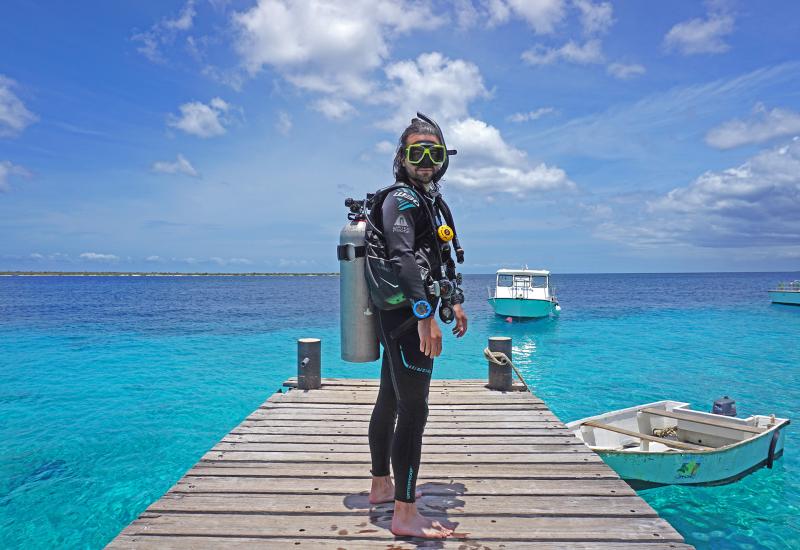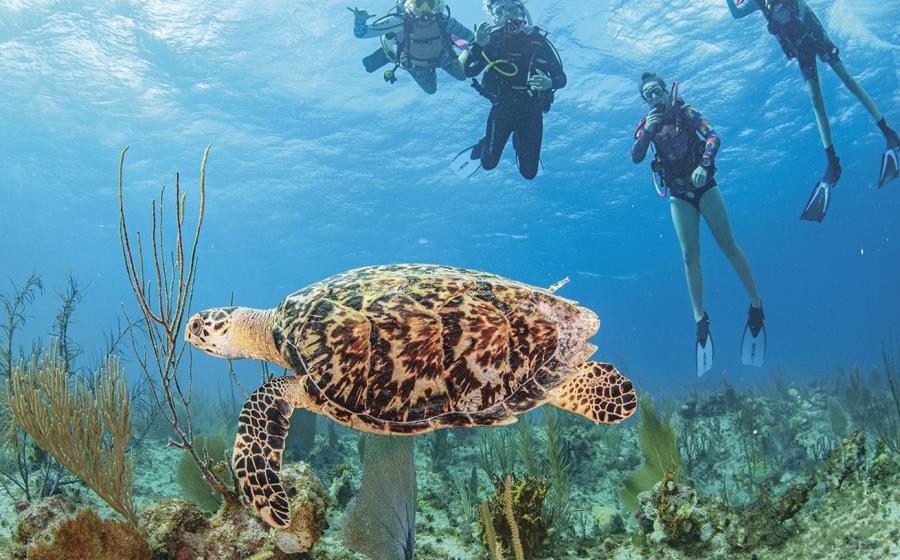Macro or Wide-angle?
When it comes to close-up photography, most novice underwater photographers think ''macro lens.'' Sure, a macro lens can produce stunning life-size images of small creatures. A macro lens, however, is not always the better choice for getting great close-ups. In fact, a wide-angle lens (15 mm) or even a super-wide-angle lens (12 mm, 13 mm and 14 mm) will produce a more dramatic picture in several situations.So the question is: Do you go macro or wide-angle on your dive when close-ups are your objective? It depends on two things: your subject and your interpretation of the scene. Check this out.Macro lens: If you are setting your sights on coral polyps, clownfish, tiny crabs or the elusive pygmy seahorse, no doubt you'll want to use a macro lens. Advantages of a macro lens (and a close-up kit) include:* Filling the frame with a small subject;* Very shallow depth of field, so your subject ''pops'' from the background;* Even in very silty water, you'll probably get minimum backscatter (light reflecting off particles in the water that creates a snowstorm-like effect).Disadvantages include:* Very shallow depth of field, so your focus must be ''right on;''* You can't possibly photograph a passing manta ray and it's difficult to photograph a large fish. Wide-angle lens: Wide-angle lenses are used for photographs of whale sharks, sharks, divers and reef scenes. In the right hands, they can produce stunning close-ups.Advantages include:* Incredible depth of field, from a few inches in front of the camera to infinity;* Almost no focus problem;* An almost 3-D effect because of the great depth of field;* Showing an animal and its surrounding environment, like a moray eel in a hole in the reef;* Showing an animal, the reef, a diver and the dive boat on the surface -- all in one picture!Disadvantages include:* If you see two nudibranchs mating, you'll miss the shot because they will be too small in the frame -- maybe pea-size;* Backscatter is much more of a problem, which can be somewhat remedied by making sure the strobes are positioned slightly behind the lens (a technique that requires flexible strobe arms).Basic close-up techniques: Wide-angle and macro photographers can benefit by following some basic techniques:* Use modeling lights to make sure that your strobes are illuminating your subject;* Use a small f-stop for maximum depth of field;* Watch the background make sure a coral branch is not ''growing'' out of your subject's head;* Don't scare the hell out of your subject; be patient and approach the animal slowly;* Use fine-grain film (ISO 50 - 100) to capture all the detail of your subject; * Be careful! Because you'll be working close to the reef, you need to be extra careful about not touching the fragile corals or creating a sandstorm with the quick kick of a fin. You'll also need to be extra careful with your fragile lens. Keep in mind that a current or surge could knock (or smash) your lens into the reef, not only resulting in killed corals, but also a scratched lens or a flooded camera.David Doubliet, famed National Geographic underwater photographer, sometimes dives with 10 cameras and five assistants. I'm not telling you this to make you jealous. I'm sharing this with you for two reasons. First, if possible, dive with a buddy/assistant who can carry an extra camera or two for you so you can shoot with a macro lens and a wide-angle lens. Second, don't compare your work to the work of top professionals. They not only have assistants, but they have the luxury of the one thing most of us don't have: lots of time (sometimes months) to take great pictures.










